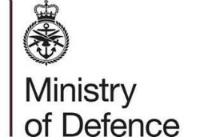Defence Budget
As part of an Institute of Fiscal Studies’ (IFS) analysis of the pre-election Budget, the Telegraph, Times and Guardian lead with the angle that in order to protect defence spending at 2 per cent of GDP, other public services including the courts, police and councils could face budgetary cuts. According to the economic think-tank, cuts to government departments needed between now and 2020 could rise from £18.3 billion under Conservative plans to £26.6 billion if the NATO promise is met. There are various comment pieces arguing that the defence budget should be maintained at 2% in the face of likely predicted post-election pressure.
As reported last week, the UK continues to deliver the second largest defence budget in NATO and the largest in the EU and is committed to spending 2% of GDP on defence with decisions on spending after the financial year 2015/16 to be determined in the next spending review. Over the next decade, the Government has committed to spending £163 billion on equipment and equipment support to keep Britain safe. That includes new strike fighters; more surveillance aircraft; hunter killer submarines; two aircraft carriers; and the most advanced armoured vehicles. Furthermore, Future Force 2020 means that are Armed Forces are now more flexible and more able to adapt to evolving threats and the Prime Minister has made clear that he does not want to see our regular armed services reduced below the level that they are now and we remain on track to deliver the Reserve force needed to counter the wide range of threats we face.
Public Accounts Committee (PAC) Report
The Public Account Committee (PAC) report on the subject of the MOD’s Major Projects Report, the Equipment Plan and the Reform of Defence Acquistion receive some coverage in the Guardian and the Sun. The Guardian says that the MOD could face a bigger budgetary challenge than anticipated after the general election. The chair of the PAC, Margaret Hodge, is quoted, welcoming the progress the MOD has made in getting to grips with its budget, but stating that risks remain to the affordability of the 10-year equipment plan.
Responding to the PAC report, Defence Secretary Michael Fallon said:
The £163 billion we plan to spend over the next 10 years on cutting edge equipment is a landmark investment and I welcome the Committee’s acknowledgement that this government has got to grips with both MOD budget and military equipment costs. The Committee’s concerns on costs are overstated – our major project costs were reduced by £400 million last year and we are confident of delivering the further savings. For the third consecutive year we have a realistic and affordable equipment plan with substantial contingency funding.
The greater freedoms afforded to Defence Equipment & Support are already allowing us to recruit and retain people with the right skills to manage major procurement projects and ensure good value for the taxpayer. We have set ourselves challenging recruitment targets, but Army 2020 plans are on track to deliver the Force we need to counter the wide range of threats we face, and retain the capability to bring to bear on the battlefield. Recruitment is moving in the right direction – the number of Army reserve new entrants enlistment in the first nine months of the financial year is 2,270, up 120% on the equivalent period last year.
It was also reported in The Metro that the MOD had admitted the bill for its ten-year equipment plan could rise by at least £5.2billion from the original £163 billion. This is not correct - the statement ignores a £4.6 billion contingency which is already part of the £163 billion plan to deal with unexpected cost growth, should it occur.
Royal Navy uniforms
As well as widespread coverage across BBC outlets yesterday, The Times, Daily Mirror, Daily Mail, Daily Telegraph and Independent report on the unveiling of the Royal Navy’s first new uniforms in 70 years. The working uniforms will give Royal Navy personnel greater comfort and utility for their daily tasks, serving in environments from the Antarctic or the Gulf. An infographic comparing the 1890 and 2015 uniforms and the developments in materials is included in the Telegraph.
Image of the day
![A Royal Air Force C-17 Globemaster arrives at RAAF Base Amberley to help support the relief efforts in Vanuatu in the aftermath of tropical cyclone Pam. A Royal Air Force C-17 Globemaster aircraft carrying shelter and lighting from the UK has landed in Vanuatu, the C-17 arrived in Vanuatu at 2 pm local time on Thursday 19 March, carrying 1,640 shelter kits which can house families of five people and more than 1,900 solar lanterns with inbuilt mobile phone chargers. These UK DFiD supplies will help protect some of the most vulnerable people affected by the cyclone, especially women and children. [Picture: Copyright - Commonwealth of Australia, Department of Defence.]](https://modmedia.blog.gov.uk/wp-content/uploads/sites/142/2015/03/POD20-620x414.jpg)
Follow us on Twitter and don’t forget to sign up for email alerts.
